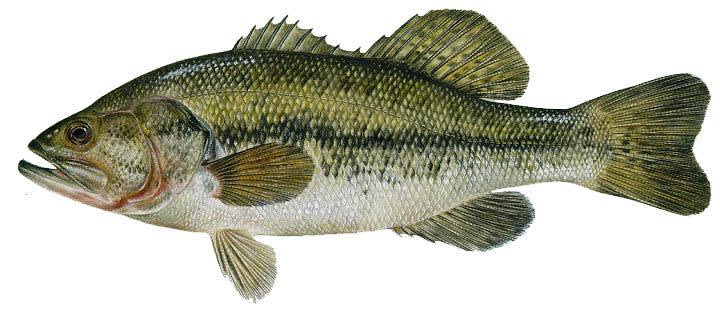Maine DIFW Encouraging the Taking of Largemouth Bass
OutdoorHub 06.29.12

The Maine Department of Inland Fisheries and Wildlife is encouraging the taking of largemouth bass of all sizes from certain Down East waters by licensed anglers starting on July 1st.
Under a fairly new law enacted by the Legislature, the Commissioner has the ability to authorize licensed anglers to assist in the taking of illegally introduced invasive species in an effort to protect the resource.
Department biologists have positively identified fish caught in Grand Falls Flowage as largemouth bass, indicating the illegal introduction of the species to the area and prompting the effort to eliminate them before they can gain a foothold in the flowage and endanger the smallmouth bass population already there.
“It’s very unfortunate that illegal stocking continues, and it’s time that Maine’s angling community takes notice,” said Chandler E. Woodcock, Commissioner of the Department of Inland Fisheries and Wildlife. “In this case, Washington County is one of the nation’s premier smallmouth bass fishing destinations, and this single introduction could jeopardize the fishery in more than 18,000 acres.”
The department’s biological staff will be working with the local anglers and the Passamaquoddy Tribe’s biologists to assess the extent of this introduction within the next few days.
The waters in the St. Croix River drainage that are included in this effort are:
- Grand Falls Flowage (including Tomah Stream, Berry Brook and George Brook Flowage)
- Lewy Lake (including Huntley Brook)
- Long Lake
- Big Lake (including Grand Lake Stream, Musquash Stream, Little Musquash Stream, Clifford Stream and Little River)
- St. Croix River from Vanceboro Dam down to tidewater in St. Stephen/Calais (including Woodland Flowage).
To distinguish a largemouth bass from a smallmouth bass, look at the upper jaw of the bass. The upper jaw bone of a largemouth bass extends behind the eye, while the upper jaw of a smallmouth bass extends to the middle of the eye.
Largemouth bass also have a black horizontal stripe running down their side that will not be found on smallmouth bass.
Largemouth bass are generally found in shallow water areas and strongly associate with underwater structures such as logs, stumps or boulders.
Introducing a non-native or invasive species to a waterbody in Maine is illegal and can have significant negative impacts.
Illegally introduced fish species can prey upon existing species, compete for food and habitat with those species, extend to other waterbodies, increase the potential for diseases to be spread and can ultimately change a fishing habitat forever.
For more information on this effort or to report caught largemouth bass, please contact Regional Fisheries Biologist Greg Burr at 207-434-5925 or the Passamaquoddy Warden Service at 207-796-2677.
If you observe a person releasing live fish into a waterbody, gather any information you can on the person’s description, boat hull number or vehicle license number if applicable and report it to Operation Game Thief at 1-800-253-7887.
If you catch a species that you believe is not known to inhabit that waterbody, kill the fish and freeze it immediately or take a photograph of the fish and contact the nearest regional MDIFW Office, listed in the fishing lawbook.
To learn more about fishing in Maine, go to www.mefishwildlife.com.

